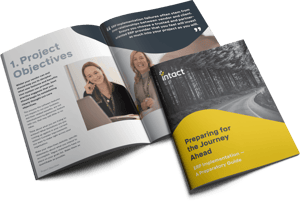
ERP tells you what is going on in your business, and with whom it is going on with. CRM leans more towards handling data related to people or companies that you would like to do business with, or do more business with.
ERP vs CRM in the Lumber and Building Materials Industry: A Comprehensive Guide
The lumber and building materials industry has been around for centuries, evolving over time to adapt to new technologies and consumer demands. With the digital transformation sweeping across industries, the adoption of Enterprise Resource Planning (ERP) and Customer Relationship Management (CRM) systems has become increasingly prevalent.
While both ERP and CRM systems aim to improve business operations, they serve distinct roles. Understanding the differences between them is crucial, especially when it comes to the specifics of the lumber and building materials sector. Here’s a comprehensive guide to help you differentiate between ERP and CRM in this unique industry.
What is ERP?
Enterprise Resource Planning (ERP) is an integrated system used to manage and automate various business processes across departments. From accounting and human resources to inventory management and supply chain operations, ERP aims to create a seamless flow of data and processes within your organization.
ERP in Lumber and Building Materials
- Inventory Management: ERP systems can keep a real-time record of raw materials like timber, screws, or metal parts. This enables you to manage you stock levels efficiently.
- Production Planning: If you manufacture your building materials, ERP assists in production scheduling and tracking, reducing idle times and enhancing productivity.
- Supply Chain Management: Manage relationships with suppliers, schedule deliveries, and optimize procurement strategies.
- Financial Management: Accounting modules can track expenses, revenues, and taxes related to the sale and distribution of lumber and building materials.
What is CRM?
Customer Relationship Management (CRM) focuses on managing you interaction with existing and potential customers. It uses data analysis to improve business relationships and drive sales growth.
CRM in Lumber and Building Materials
- Client Profiles: Maintain a database of contractors, retailers, and other clients, including their buying habits and preferences.
- Sales Forecasting: By analyzing past sales data, CRMs can predict future sales trends, helping you to manage your inventory accordingly.
- Customer Support: Centralize customer queries, complaints, and service requests, ensuring that issues are resolved promptly.
- Marketing Campaigns: A CRM can automate marketing efforts tailored to specific segments within your customer database, such as a promotion on new decking materials.
Key Differences
- Focus Area: ERP systems primarily focus on internal operations, while CRM systems concentrate on external relations—primarily customers.
- Data Flow: ERP systems facilitate the flow of data across different departments within your organization. CRM, on the other hand, is more customer-centric and focuses on capturing consumer-related data.
- User Base: In the lumber and building materials industry, ERP would be widely used by inventory managers, accountants, and logistics personnel. CRM would be the go-to tool for the sales, customer service, and marketing teams.
- Financial Impact: ERP systems are designed to save operational costs through optimization, while CRM systems aim to increase revenues by enhancing customer relationships.
Conclusion
While ERP and CRM systems have distinct roles, they are often most effective when integrated, allowing data to flow freely between them. For example, sales data from the CRM can be used to inform production planning in the ERP system.
For lumber and building materials businesses, understanding the unique advantages of each system can lead to more informed investment decisions and, ultimately, a more cohesive and profitable operation.
Thinking of upgrading your business management software?
 This essential step-by-step guide will help you make your software implementation journey as seamless and effective as possible.
This essential step-by-step guide will help you make your software implementation journey as seamless and effective as possible.
